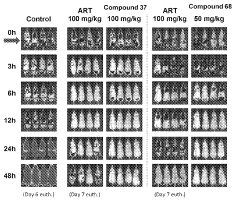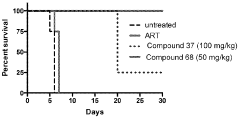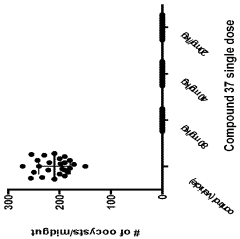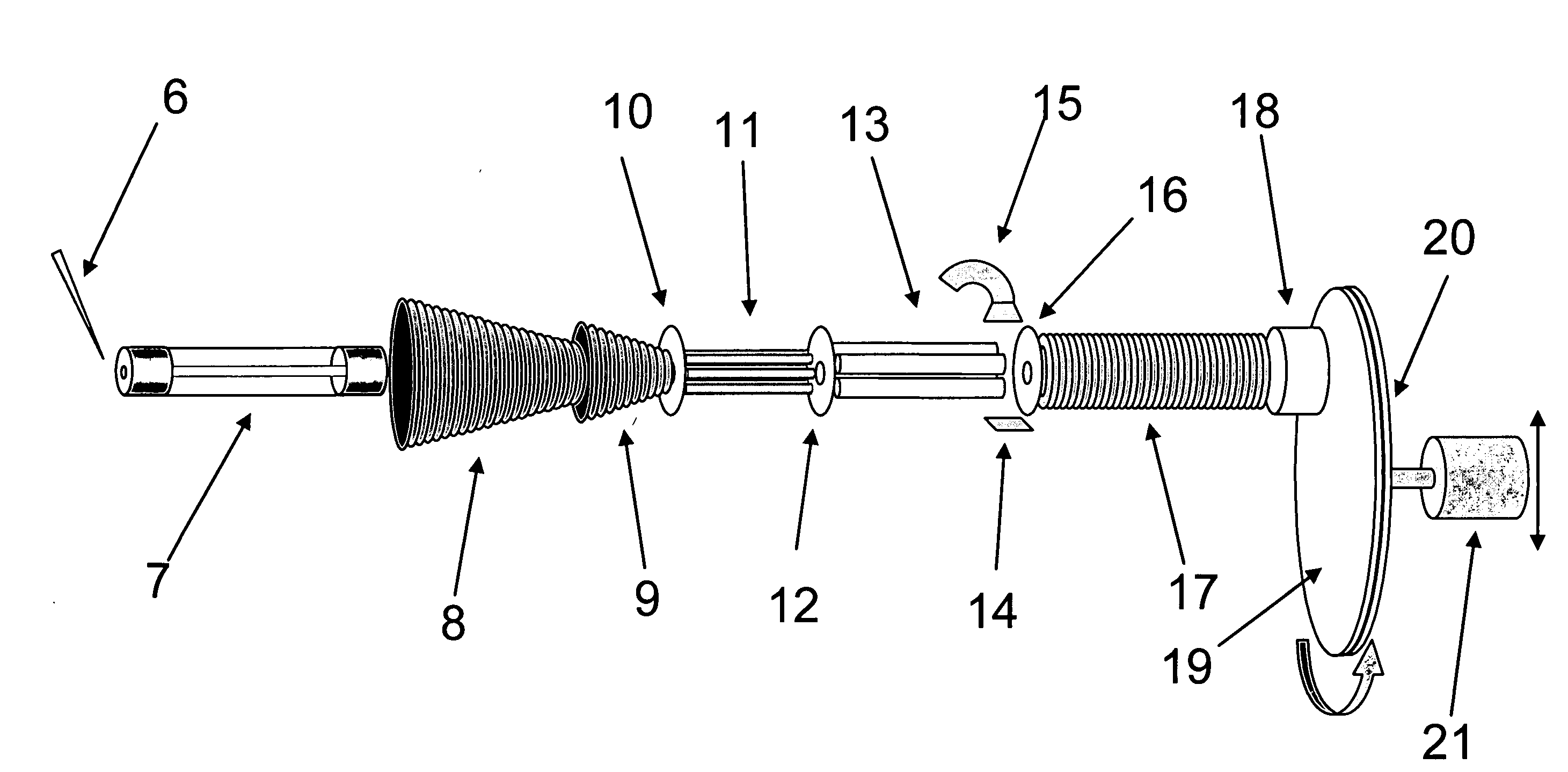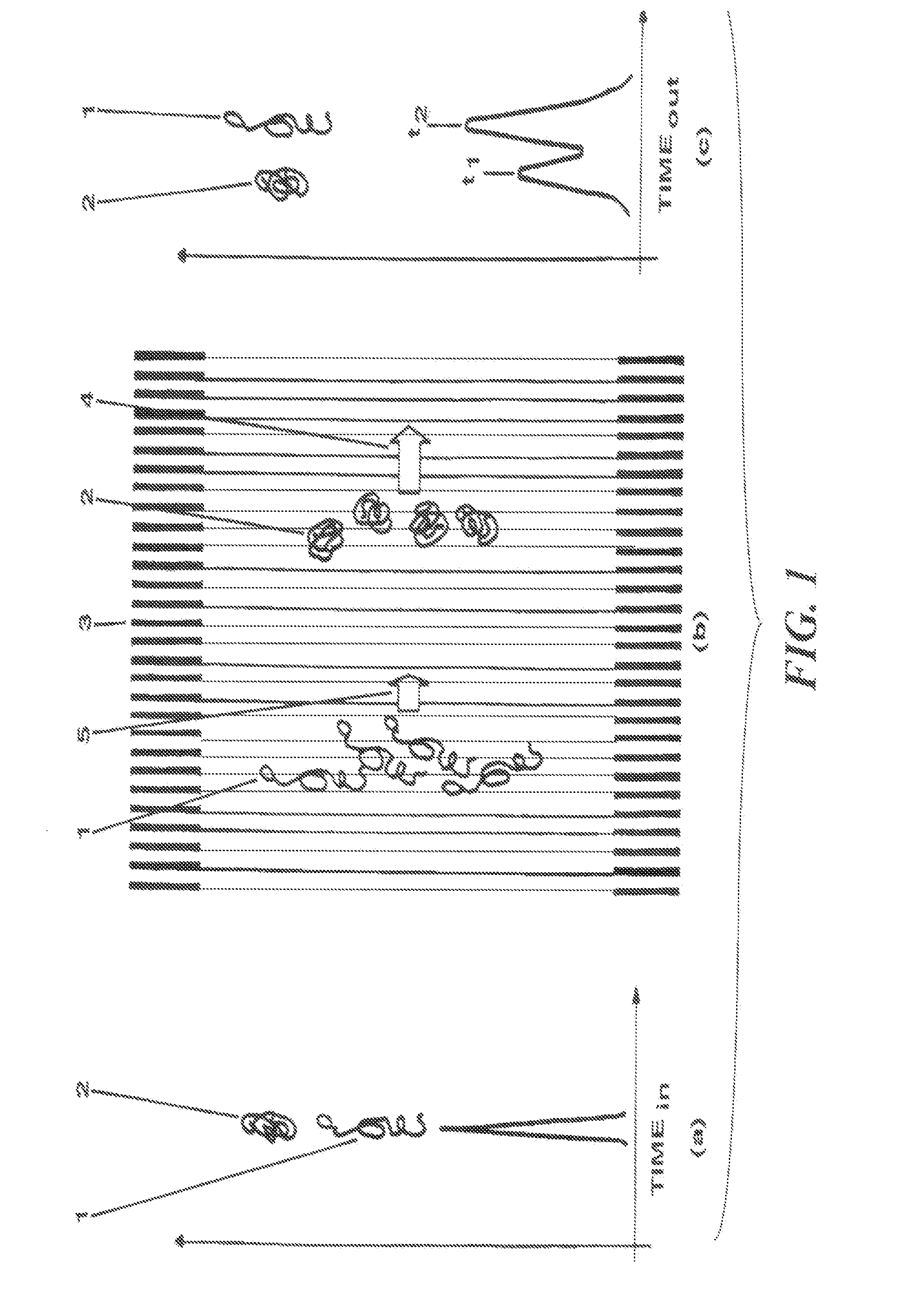Metabolic Pathways Involving Geometric Isomers in Biochemistry
AUG 1, 20259 MIN READ
Generate Your Research Report Instantly with AI Agent
Patsnap Eureka helps you evaluate technical feasibility & market potential.
Geometric Isomers in Biochemistry: Background and Objectives
Geometric isomers, a subset of stereoisomers, have played a crucial role in the evolution of biochemistry and continue to be a focal point in understanding metabolic pathways. These molecules, which have the same molecular formula but different spatial arrangements of atoms, have been the subject of extensive research since the mid-20th century. The study of geometric isomers in biochemistry has its roots in the pioneering work of scientists like Linus Pauling, who elucidated the importance of molecular structure in biological processes.
The field has progressed significantly over the decades, with advancements in analytical techniques such as X-ray crystallography, NMR spectroscopy, and computational modeling allowing for more precise characterization of these isomers. This progress has led to a deeper understanding of how subtle differences in molecular geometry can profoundly impact biological functions, from enzyme catalysis to signal transduction.
In recent years, the focus has shifted towards unraveling the complex metabolic pathways involving geometric isomers. These pathways are integral to numerous biological processes, including lipid metabolism, hormone synthesis, and vitamin production. The cis-trans isomerization of fatty acids, for instance, has been recognized as a key step in the biosynthesis of unsaturated fatty acids, with implications for membrane fluidity and cellular signaling.
The objectives of current research in this field are multifaceted. Primarily, there is a drive to map out the complete network of metabolic pathways involving geometric isomers, identifying key enzymes and regulatory mechanisms. This comprehensive understanding is crucial for developing targeted therapeutic interventions for diseases associated with isomer imbalances or misregulation.
Another significant goal is to elucidate the evolutionary significance of geometric isomerism in biochemical processes. Researchers aim to understand how nature has leveraged these subtle structural differences to fine-tune biological functions over evolutionary time scales. This knowledge could provide insights into the fundamental principles governing the organization of life at the molecular level.
Furthermore, there is growing interest in harnessing the unique properties of geometric isomers for biotechnological applications. This includes the development of novel biocatalysts capable of stereospecific transformations, which could have far-reaching implications in the pharmaceutical and chemical industries. The potential for creating 'designer' enzymes that can selectively produce specific isomers is an exciting frontier in synthetic biology.
As we look to the future, the study of geometric isomers in biochemistry is poised to make significant contributions to our understanding of life processes and to drive innovations in medicine and biotechnology. The convergence of advanced analytical techniques, computational power, and interdisciplinary approaches promises to unlock new insights into the intricate world of metabolic pathways and their geometric isomer participants.
The field has progressed significantly over the decades, with advancements in analytical techniques such as X-ray crystallography, NMR spectroscopy, and computational modeling allowing for more precise characterization of these isomers. This progress has led to a deeper understanding of how subtle differences in molecular geometry can profoundly impact biological functions, from enzyme catalysis to signal transduction.
In recent years, the focus has shifted towards unraveling the complex metabolic pathways involving geometric isomers. These pathways are integral to numerous biological processes, including lipid metabolism, hormone synthesis, and vitamin production. The cis-trans isomerization of fatty acids, for instance, has been recognized as a key step in the biosynthesis of unsaturated fatty acids, with implications for membrane fluidity and cellular signaling.
The objectives of current research in this field are multifaceted. Primarily, there is a drive to map out the complete network of metabolic pathways involving geometric isomers, identifying key enzymes and regulatory mechanisms. This comprehensive understanding is crucial for developing targeted therapeutic interventions for diseases associated with isomer imbalances or misregulation.
Another significant goal is to elucidate the evolutionary significance of geometric isomerism in biochemical processes. Researchers aim to understand how nature has leveraged these subtle structural differences to fine-tune biological functions over evolutionary time scales. This knowledge could provide insights into the fundamental principles governing the organization of life at the molecular level.
Furthermore, there is growing interest in harnessing the unique properties of geometric isomers for biotechnological applications. This includes the development of novel biocatalysts capable of stereospecific transformations, which could have far-reaching implications in the pharmaceutical and chemical industries. The potential for creating 'designer' enzymes that can selectively produce specific isomers is an exciting frontier in synthetic biology.
As we look to the future, the study of geometric isomers in biochemistry is poised to make significant contributions to our understanding of life processes and to drive innovations in medicine and biotechnology. The convergence of advanced analytical techniques, computational power, and interdisciplinary approaches promises to unlock new insights into the intricate world of metabolic pathways and their geometric isomer participants.
Market Demand for Metabolic Pathway Research
The market demand for metabolic pathway research involving geometric isomers in biochemistry has been steadily growing in recent years, driven by several key factors. The pharmaceutical industry, in particular, has shown significant interest in this field due to the potential for developing new drugs and improving existing ones. Geometric isomers play a crucial role in many biological processes, and understanding their involvement in metabolic pathways can lead to more effective and targeted therapies.
In the biotechnology sector, there is a rising demand for research on metabolic pathways involving geometric isomers, as it can provide insights into the production of valuable compounds through fermentation and other bioprocesses. This knowledge can be applied to optimize the production of biofuels, fine chemicals, and other high-value products, making it attractive for companies in the industrial biotechnology space.
The food and nutrition industry has also shown increased interest in this area of research. Understanding the metabolic pathways of geometric isomers can help in developing functional foods and nutraceuticals with specific health benefits. This aligns with the growing consumer trend towards personalized nutrition and health-conscious food choices.
Agricultural companies are another significant market segment driving demand for this research. The study of metabolic pathways involving geometric isomers can lead to improvements in crop yield, resistance to pests and diseases, and enhanced nutritional profiles of plants. This is particularly relevant in the context of sustainable agriculture and food security challenges.
The cosmetics and personal care industry has begun to recognize the potential of this research in developing new active ingredients and improving the efficacy of existing products. Understanding the metabolic pathways of geometric isomers can lead to innovations in anti-aging products, skin care formulations, and other personal care applications.
Environmental science and waste management sectors are also showing interest in this research area. Knowledge of metabolic pathways involving geometric isomers can be applied to develop more efficient bioremediation strategies and improve waste treatment processes.
The academic and research institutions continue to be a significant driver of demand for this type of research, as it contributes to fundamental understanding in biochemistry and molecular biology. This basic research often leads to discoveries that can be translated into practical applications across various industries.
Overall, the market demand for research on metabolic pathways involving geometric isomers in biochemistry is diverse and expanding. It spans multiple industries and has the potential to drive innovation in drug discovery, biotechnology, nutrition, agriculture, and environmental sciences. As the importance of precision in molecular interactions becomes increasingly recognized, this field of research is likely to see continued growth and investment in the coming years.
In the biotechnology sector, there is a rising demand for research on metabolic pathways involving geometric isomers, as it can provide insights into the production of valuable compounds through fermentation and other bioprocesses. This knowledge can be applied to optimize the production of biofuels, fine chemicals, and other high-value products, making it attractive for companies in the industrial biotechnology space.
The food and nutrition industry has also shown increased interest in this area of research. Understanding the metabolic pathways of geometric isomers can help in developing functional foods and nutraceuticals with specific health benefits. This aligns with the growing consumer trend towards personalized nutrition and health-conscious food choices.
Agricultural companies are another significant market segment driving demand for this research. The study of metabolic pathways involving geometric isomers can lead to improvements in crop yield, resistance to pests and diseases, and enhanced nutritional profiles of plants. This is particularly relevant in the context of sustainable agriculture and food security challenges.
The cosmetics and personal care industry has begun to recognize the potential of this research in developing new active ingredients and improving the efficacy of existing products. Understanding the metabolic pathways of geometric isomers can lead to innovations in anti-aging products, skin care formulations, and other personal care applications.
Environmental science and waste management sectors are also showing interest in this research area. Knowledge of metabolic pathways involving geometric isomers can be applied to develop more efficient bioremediation strategies and improve waste treatment processes.
The academic and research institutions continue to be a significant driver of demand for this type of research, as it contributes to fundamental understanding in biochemistry and molecular biology. This basic research often leads to discoveries that can be translated into practical applications across various industries.
Overall, the market demand for research on metabolic pathways involving geometric isomers in biochemistry is diverse and expanding. It spans multiple industries and has the potential to drive innovation in drug discovery, biotechnology, nutrition, agriculture, and environmental sciences. As the importance of precision in molecular interactions becomes increasingly recognized, this field of research is likely to see continued growth and investment in the coming years.
Current State and Challenges in Geometric Isomer Analysis
The analysis of geometric isomers in biochemical metabolic pathways has made significant strides in recent years, yet it continues to present substantial challenges to researchers. Current state-of-the-art techniques primarily rely on a combination of advanced chromatography methods, such as high-performance liquid chromatography (HPLC) and gas chromatography (GC), coupled with mass spectrometry (MS) for identification and quantification of geometric isomers.
One of the major advancements in this field has been the development of chiral stationary phases for chromatographic separation, which has greatly improved the resolution of geometric isomers. However, the complexity of biological matrices often necessitates extensive sample preparation and purification steps, which can lead to potential loss or alteration of the target compounds.
Nuclear magnetic resonance (NMR) spectroscopy has emerged as a powerful complementary technique for structural elucidation of geometric isomers. While NMR provides detailed information about molecular structure, it often requires larger sample quantities and may struggle with complex mixtures typical in metabolic studies.
A significant challenge in the field is the limited availability of authentic standards for many geometric isomers involved in metabolic pathways. This hampers accurate identification and quantification, particularly for novel or less studied metabolites. Researchers are increasingly turning to in silico prediction tools and metabolite databases to address this issue, but the accuracy of these computational approaches still requires improvement.
The dynamic nature of metabolic processes poses another challenge. Geometric isomers can interconvert rapidly under physiological conditions, making it difficult to capture a true snapshot of the metabolic state. This necessitates the development of rapid sampling and analysis techniques that can minimize artifactual changes during sample handling and analysis.
Furthermore, the biological significance of many geometric isomers in metabolic pathways remains poorly understood. While some isomers have well-established roles, such as cis-trans isomerization in vision, the functional implications of geometric isomerism in many other metabolic processes are yet to be fully elucidated.
Emerging technologies, such as ion mobility-mass spectrometry (IM-MS) and ultrafast two-dimensional NMR, show promise in addressing some of these challenges. These techniques offer improved separation and structural characterization capabilities, potentially enabling more comprehensive analysis of geometric isomers in complex biological systems.
In conclusion, while significant progress has been made in the analysis of geometric isomers in biochemical metabolic pathways, researchers continue to face challenges in areas such as sample preparation, isomer resolution, standard availability, and understanding of biological relevance. Overcoming these obstacles will be crucial for advancing our understanding of the role of geometric isomerism in metabolism and its implications for health and disease.
One of the major advancements in this field has been the development of chiral stationary phases for chromatographic separation, which has greatly improved the resolution of geometric isomers. However, the complexity of biological matrices often necessitates extensive sample preparation and purification steps, which can lead to potential loss or alteration of the target compounds.
Nuclear magnetic resonance (NMR) spectroscopy has emerged as a powerful complementary technique for structural elucidation of geometric isomers. While NMR provides detailed information about molecular structure, it often requires larger sample quantities and may struggle with complex mixtures typical in metabolic studies.
A significant challenge in the field is the limited availability of authentic standards for many geometric isomers involved in metabolic pathways. This hampers accurate identification and quantification, particularly for novel or less studied metabolites. Researchers are increasingly turning to in silico prediction tools and metabolite databases to address this issue, but the accuracy of these computational approaches still requires improvement.
The dynamic nature of metabolic processes poses another challenge. Geometric isomers can interconvert rapidly under physiological conditions, making it difficult to capture a true snapshot of the metabolic state. This necessitates the development of rapid sampling and analysis techniques that can minimize artifactual changes during sample handling and analysis.
Furthermore, the biological significance of many geometric isomers in metabolic pathways remains poorly understood. While some isomers have well-established roles, such as cis-trans isomerization in vision, the functional implications of geometric isomerism in many other metabolic processes are yet to be fully elucidated.
Emerging technologies, such as ion mobility-mass spectrometry (IM-MS) and ultrafast two-dimensional NMR, show promise in addressing some of these challenges. These techniques offer improved separation and structural characterization capabilities, potentially enabling more comprehensive analysis of geometric isomers in complex biological systems.
In conclusion, while significant progress has been made in the analysis of geometric isomers in biochemical metabolic pathways, researchers continue to face challenges in areas such as sample preparation, isomer resolution, standard availability, and understanding of biological relevance. Overcoming these obstacles will be crucial for advancing our understanding of the role of geometric isomerism in metabolism and its implications for health and disease.
Existing Methods for Studying Geometric Isomers
01 Synthesis and separation of geometric isomers
Methods for synthesizing and separating geometric isomers, including techniques for isolating specific isomers from mixtures. This involves various chemical processes and separation techniques to obtain pure geometric isomers for further use or study.- Synthesis and separation of geometric isomers: Methods for synthesizing and separating geometric isomers are crucial in organic chemistry. These techniques involve various reaction conditions, catalysts, and purification processes to obtain specific isomers. Separation methods may include chromatography, crystallization, or selective complexation.
- Geometric isomers in pharmaceutical compounds: Geometric isomerism plays a significant role in pharmaceutical compounds, affecting their biological activity and efficacy. Research focuses on identifying and isolating specific isomers with desired therapeutic properties, as well as studying their metabolism and pharmacokinetics.
- Analytical methods for geometric isomers: Advanced analytical techniques are employed to identify, characterize, and quantify geometric isomers. These methods include spectroscopic techniques such as NMR, IR, and mass spectrometry, as well as chromatographic methods like HPLC and GC.
- Computational modeling of geometric isomers: Computational methods are used to predict and analyze the properties of geometric isomers. These include molecular modeling, quantum chemical calculations, and machine learning approaches to understand isomer stability, reactivity, and conformational preferences.
- Applications of geometric isomers in materials science: Geometric isomers find applications in various fields of materials science, including liquid crystals, polymers, and nanomaterials. The specific arrangement of atoms in these isomers can lead to unique physical and chemical properties, enabling the development of novel materials with tailored characteristics.
02 Geometric isomers in pharmaceutical compounds
The importance of geometric isomers in pharmaceutical compounds, including their effects on drug efficacy and safety. This involves studying the different biological activities of geometric isomers and developing methods to produce specific isomers for pharmaceutical applications.Expand Specific Solutions03 Analytical methods for identifying geometric isomers
Development of analytical techniques for identifying and characterizing geometric isomers, including spectroscopic methods and chromatography. These methods are crucial for quality control in various industries and for research purposes.Expand Specific Solutions04 Geometric isomers in materials science
Applications of geometric isomers in materials science, including their use in developing new materials with specific properties. This involves studying how the arrangement of atoms in geometric isomers affects material characteristics and performance.Expand Specific Solutions05 Computational modeling of geometric isomers
Use of computational methods to model and predict properties of geometric isomers, including molecular dynamics simulations and quantum mechanical calculations. These techniques aid in understanding isomer behavior and guiding experimental work.Expand Specific Solutions
Key Players in Biochemical Research and Industry
The research on metabolic pathways involving geometric isomers in biochemistry is in a developing stage, with a growing market driven by pharmaceutical and biotechnology industries. The field is characterized by moderate technological maturity, with companies like Metabolon, Inc. and Sunshine Lake Pharma Co., Ltd. leading in metabolomics and drug development. The competitive landscape is diverse, including established pharmaceutical firms like Janssen Pharmaceutica NV and emerging biotech companies such as PTC Therapeutics, Inc. Academic institutions like Duke University and China Pharmaceutical University also play crucial roles in advancing research. The market shows potential for expansion as the understanding of metabolic pathways deepens, attracting both industry players and research institutions.
Metabolon, Inc.
Technical Solution: Metabolon has developed a comprehensive metabolomics platform for studying geometric isomers in biochemical pathways. Their approach combines advanced mass spectrometry techniques with proprietary software algorithms to identify and quantify thousands of metabolites, including geometric isomers, in biological samples. The company's technology enables the detection of subtle changes in metabolic pathways involving cis-trans isomerization, which is crucial for understanding various biochemical processes and disease mechanisms[1][3]. Metabolon's platform utilizes high-resolution chromatography coupled with tandem mass spectrometry to separate and identify geometric isomers with high precision, allowing researchers to map complex metabolic networks and elucidate the role of isomers in cellular metabolism[2].
Strengths: Comprehensive metabolite coverage, high-throughput analysis, and advanced bioinformatics tools for data interpretation. Weaknesses: Potential high cost for routine analyses and the need for specialized expertise to interpret complex metabolomic data.
Duke University
Technical Solution: Duke University's research on metabolic pathways involving geometric isomers in biochemistry focuses on developing novel analytical methods and computational approaches. Their researchers have pioneered the use of ion mobility-mass spectrometry (IM-MS) for the separation and identification of geometric isomers in complex biological matrices. This technique exploits differences in the collision cross-section of isomers, allowing for their differentiation based on their three-dimensional structure[8]. Duke's team has also developed machine learning algorithms to predict the behavior of geometric isomers in IM-MS, enhancing the accuracy of metabolite identification in metabolomics studies[9]. Additionally, they have applied these techniques to investigate the role of geometric isomers in various biological processes, including lipid metabolism and xenobiotic transformations[10].
Strengths: Cutting-edge analytical techniques, strong computational expertise, and interdisciplinary approach. Weaknesses: As an academic institution, may face challenges in commercializing research findings and scaling up technologies.
Core Innovations in Metabolic Pathway Analysis
Compounds and methods for the treatment of malaria
PatentInactiveIN202118043692A
Innovation
- Development of specific compounds, such as those represented by Formula I and listed in Table 1, which offer new structural features and functional groups to target malaria parasites effectively, including those resistant to existing drugs.
Preparative ion mobility spectrometry
PatentActiveUS20080042055A1
Innovation
- The apparatus and method involve separating ion mobility separation and analysis into distinct devices, allowing mobility-separated ions to be deposited onto a receiver for subsequent analysis using various techniques, enabling spatial focusing and controlled deposition methods such as 'soft landing' or 'crash landing' to preserve or fragment ions, and allowing for accumulative deposition and analysis under different conditions.
Regulatory Framework for Biochemical Research
The regulatory framework for biochemical research involving geometric isomers in metabolic pathways is complex and multifaceted. It encompasses various levels of oversight, from international guidelines to national regulations and institutional policies.
At the international level, organizations such as the World Health Organization (WHO) and the International Conference on Harmonisation of Technical Requirements for Registration of Pharmaceuticals for Human Use (ICH) provide guidelines for research involving biochemical compounds. These guidelines often address safety considerations, ethical standards, and quality control measures applicable to studies on geometric isomers in metabolic pathways.
National regulatory bodies play a crucial role in overseeing biochemical research. In the United States, the Food and Drug Administration (FDA) and the Environmental Protection Agency (EPA) are key regulators. The FDA's Good Laboratory Practice (GLP) regulations set standards for non-clinical laboratory studies, including those involving geometric isomers. The EPA's Toxic Substances Control Act (TSCA) regulates the introduction of new chemical substances, which may include geometric isomers used in metabolic pathway research.
In the European Union, the European Medicines Agency (EMA) provides guidance on the conduct of biochemical research. The Registration, Evaluation, Authorisation and Restriction of Chemicals (REACH) regulation also impacts research involving chemical substances, including geometric isomers.
Institutional Review Boards (IRBs) or Ethics Committees at research institutions provide an additional layer of oversight. These bodies ensure that research protocols comply with ethical standards and regulatory requirements, particularly when studies involve human subjects or animal models.
Specific regulations often apply to different aspects of metabolic pathway research. For instance, the use of radioisotopes to trace metabolic pathways is subject to radiation safety regulations. Similarly, research involving genetically modified organisms to study isomer metabolism must adhere to biosafety regulations.
Data protection and sharing regulations also impact biochemical research. The General Data Protection Regulation (GDPR) in the EU and the Health Insurance Portability and Accountability Act (HIPAA) in the US govern the handling of personal data in research contexts.
Researchers must navigate this complex regulatory landscape to ensure compliance while advancing scientific knowledge. Staying informed about regulatory changes and engaging with regulatory bodies and institutional compliance offices is crucial for conducting ethical and legally compliant research on metabolic pathways involving geometric isomers.
At the international level, organizations such as the World Health Organization (WHO) and the International Conference on Harmonisation of Technical Requirements for Registration of Pharmaceuticals for Human Use (ICH) provide guidelines for research involving biochemical compounds. These guidelines often address safety considerations, ethical standards, and quality control measures applicable to studies on geometric isomers in metabolic pathways.
National regulatory bodies play a crucial role in overseeing biochemical research. In the United States, the Food and Drug Administration (FDA) and the Environmental Protection Agency (EPA) are key regulators. The FDA's Good Laboratory Practice (GLP) regulations set standards for non-clinical laboratory studies, including those involving geometric isomers. The EPA's Toxic Substances Control Act (TSCA) regulates the introduction of new chemical substances, which may include geometric isomers used in metabolic pathway research.
In the European Union, the European Medicines Agency (EMA) provides guidance on the conduct of biochemical research. The Registration, Evaluation, Authorisation and Restriction of Chemicals (REACH) regulation also impacts research involving chemical substances, including geometric isomers.
Institutional Review Boards (IRBs) or Ethics Committees at research institutions provide an additional layer of oversight. These bodies ensure that research protocols comply with ethical standards and regulatory requirements, particularly when studies involve human subjects or animal models.
Specific regulations often apply to different aspects of metabolic pathway research. For instance, the use of radioisotopes to trace metabolic pathways is subject to radiation safety regulations. Similarly, research involving genetically modified organisms to study isomer metabolism must adhere to biosafety regulations.
Data protection and sharing regulations also impact biochemical research. The General Data Protection Regulation (GDPR) in the EU and the Health Insurance Portability and Accountability Act (HIPAA) in the US govern the handling of personal data in research contexts.
Researchers must navigate this complex regulatory landscape to ensure compliance while advancing scientific knowledge. Staying informed about regulatory changes and engaging with regulatory bodies and institutional compliance offices is crucial for conducting ethical and legally compliant research on metabolic pathways involving geometric isomers.
Ethical Considerations in Metabolic Pathway Manipulation
The manipulation of metabolic pathways involving geometric isomers in biochemistry raises significant ethical considerations that must be carefully addressed. One primary concern is the potential for unintended consequences when altering natural biochemical processes. Modifying metabolic pathways could lead to unforeseen effects on organism health, ecosystem balance, and biodiversity. Researchers must exercise caution and conduct thorough risk assessments before implementing any changes to these pathways.
Another ethical consideration is the responsible use of this technology in agriculture and food production. While manipulating metabolic pathways could potentially enhance crop yields or nutritional content, there are concerns about the long-term safety of genetically modified organisms (GMOs) and their impact on human health and the environment. Transparency in research and clear communication of potential risks to the public are essential to maintain trust and ethical integrity.
The equitable distribution of benefits derived from metabolic pathway manipulation is also a crucial ethical concern. There is a risk that advancements in this field could exacerbate existing inequalities if access to the technology is limited to wealthy nations or corporations. Ensuring fair access to the benefits of this research across different socioeconomic groups and geographical regions is vital for ethical implementation.
Privacy and data protection issues arise when considering the potential for personalized medicine based on individual metabolic profiles. As research in this area progresses, safeguarding sensitive genetic and metabolic information becomes increasingly important to protect individuals from discrimination or misuse of their data.
Ethical considerations also extend to the use of animal models in metabolic pathway research. Researchers must adhere to strict guidelines for animal welfare and minimize suffering while conducting experiments. Additionally, the ethical implications of potentially applying findings from animal studies to human subjects must be carefully evaluated.
The potential for dual-use applications of metabolic pathway manipulation technology raises further ethical concerns. While the primary intent may be beneficial, such as developing new treatments for metabolic disorders, the same knowledge could potentially be misused for harmful purposes, such as creating biological weapons. Establishing robust safeguards and international regulations is crucial to prevent misuse of this technology.
Lastly, the ethical implications of altering fundamental biological processes must be considered from a philosophical and societal perspective. Questions about the limits of human intervention in nature and the potential long-term consequences of manipulating metabolic pathways on evolution and biodiversity require ongoing ethical discourse and public engagement.
Another ethical consideration is the responsible use of this technology in agriculture and food production. While manipulating metabolic pathways could potentially enhance crop yields or nutritional content, there are concerns about the long-term safety of genetically modified organisms (GMOs) and their impact on human health and the environment. Transparency in research and clear communication of potential risks to the public are essential to maintain trust and ethical integrity.
The equitable distribution of benefits derived from metabolic pathway manipulation is also a crucial ethical concern. There is a risk that advancements in this field could exacerbate existing inequalities if access to the technology is limited to wealthy nations or corporations. Ensuring fair access to the benefits of this research across different socioeconomic groups and geographical regions is vital for ethical implementation.
Privacy and data protection issues arise when considering the potential for personalized medicine based on individual metabolic profiles. As research in this area progresses, safeguarding sensitive genetic and metabolic information becomes increasingly important to protect individuals from discrimination or misuse of their data.
Ethical considerations also extend to the use of animal models in metabolic pathway research. Researchers must adhere to strict guidelines for animal welfare and minimize suffering while conducting experiments. Additionally, the ethical implications of potentially applying findings from animal studies to human subjects must be carefully evaluated.
The potential for dual-use applications of metabolic pathway manipulation technology raises further ethical concerns. While the primary intent may be beneficial, such as developing new treatments for metabolic disorders, the same knowledge could potentially be misused for harmful purposes, such as creating biological weapons. Establishing robust safeguards and international regulations is crucial to prevent misuse of this technology.
Lastly, the ethical implications of altering fundamental biological processes must be considered from a philosophical and societal perspective. Questions about the limits of human intervention in nature and the potential long-term consequences of manipulating metabolic pathways on evolution and biodiversity require ongoing ethical discourse and public engagement.
Unlock deeper insights with Patsnap Eureka Quick Research — get a full tech report to explore trends and direct your research. Try now!
Generate Your Research Report Instantly with AI Agent
Supercharge your innovation with Patsnap Eureka AI Agent Platform!
